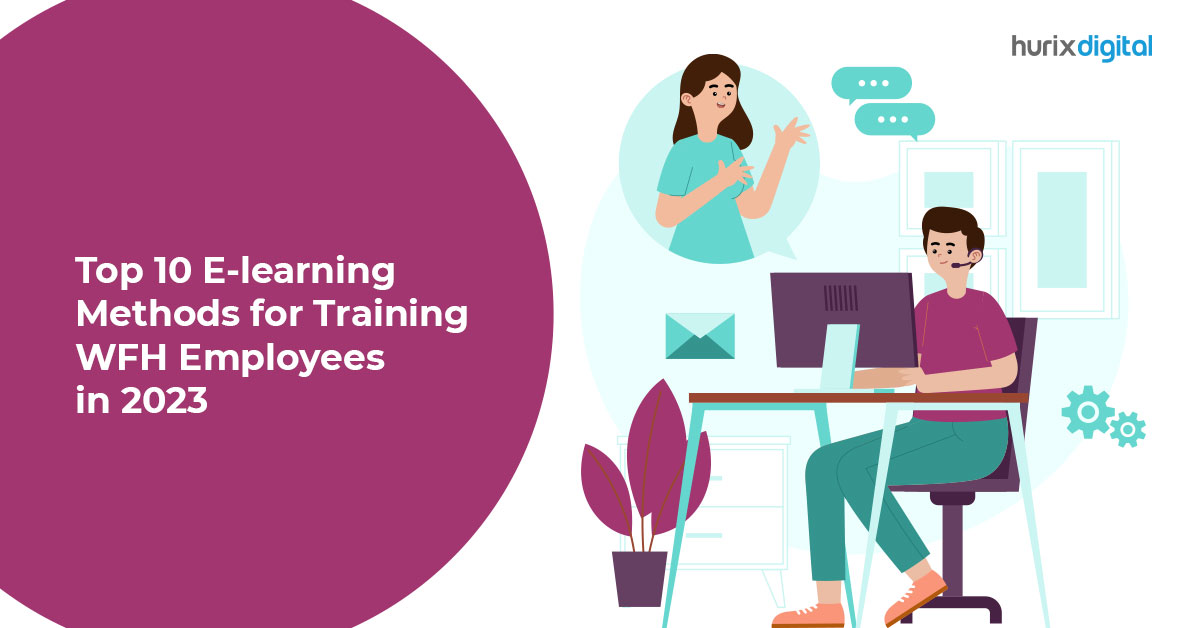
Top 10 E-learning Methods for Training WFH Employees in 2025
Summarize with:
As the workforce becomes increasingly remote, ensuring that your team has access to high-quality training and development opportunities is more important than ever.
With the right e-learning methods, you can provide your WFH employees with the skills and knowledge they need to be productive and engaged, no matter where they are located.
In this article, we’ll explore the top X e-learning methods for training WFH employees in 2025.
1. Interactive Modules
Interactive e-learning modules are a great way to engage remote employees and ensure they actively participate in the training process.
These modules often include quizzes, games, and other interactive elements that keep learners engaged and help them retain information. They can be accessed from anywhere as long as there is an internet connection, making them ideal for remote teams.
Interactive modules are especially useful for training on topics that require a lot of memorization or repetition, such as compliance training or product knowledge.
By incorporating quizzes and other interactive elements, you can ensure that your WFH employees are retaining the information they need to succeed.
2. Microlearning
It involves breaking down training materials into small, bite-sized pieces that learners can easily consume. This approach is ideal for training WFH employees with limited time or attention spans.
By delivering information in short bursts, you can help employees stay engaged and avoid information overload. Microlearning can take many forms, including videos, podcasts, and infographics.
The key is to keep each piece of content short and focused on a single topic or concept. This approach can be especially effective for onboarding new employees or introducing them to new products or services.
3. Virtual Simulations
Virtual simulations are a powerful e-learning tool that allows learners to practice real-world skills in a safe, controlled environment.
They can be especially useful for training WFH employees who may not have access to hands-on training opportunities. Virtual simulations can be used to teach a wide range of skills, from customer service to complex technical tasks.
By immersing learners in a virtual environment, you can help them develop critical thinking skills and problem-solving abilities. This method is especially effective when combined with interactive elements such as quizzes and challenges.
4. Gamification
Did you know that by implementing gamification, it is possible to boost company productivity by up to 50% and increase employee engagement by 60%?
It can be especially effective for training WFH employees who may be struggling to stay motivated in a remote work environment.
Gamification can take many forms, including leaderboards, badges, and rewards. By incorporating these elements into e-learning materials, you can encourage learners to stay engaged throughout the training process.
This approach can be particularly beneficial for training soft skills such as communication or teamwork.
5. Mobile Learning
Mobile learning involves delivering training materials to learners’ mobile devices, such as smartphones and tablets. This e-learning method is ideal for WFH employees who may be on the go or working from multiple locations.
Mobile learning can take many forms, including apps, mobile-optimized websites, and messaging platforms. It ensures that learners have access to the information they need, regardless of location.
6. Social Learning
In a recent study, a significant proportion of learners (84.6%) expressed their preference for social learning tools as they found them to be effective in improving the teaching-learning process.
Social learning refers to the use of social media platforms and other collaborative tools to facilitate learning and knowledge-sharing. This e-learning approach is excellent for training WFH employees who may be feeling isolated or disconnected from their colleagues.
Social learning can take many forms, including discussion forums, peer-to-peer mentoring, and online communities. By encouraging learners to collaborate and share their knowledge, you can create a culture of continuous learning and development within your remote team.
7. Personalized Learning
It entails tailoring training materials to the unique needs and preferences of individual learners. This technique is ideal for training WFH employees with different learning styles or requiring additional support to complete a complex course.
Personalized learning can take many forms, including self-paced courses, adaptive assessments, and one-on-one coaching. By understanding the unique needs of each learner, you can create training materials that are customized to their individual strengths and weaknesses.
8. Augmented Reality (AR) and Virtual Reality (VR)
AR and VR are cutting-edge e-learning technologies that can help bring training materials to life.
AR involves overlaying digital information in the real world. On the other hand, VR involves creating a virtual environment that is fully immersive.
AR and VR can be used to teach a wide range of skills, from product assembly to hazardous material handling. By immersing learners in a realistic and interactive environment, you can help them develop critical thinking and decision-making skills.
9. Peer-to-Peer Learning
It involves creating opportunities for employees to learn from their colleagues. Peer-to-peer learning is ideal for WFH employees who may feel disconnected from their team or benefit from additional support and mentorship.
Peer-to-peer learning can take many forms, including group projects, cross-functional teams, and mentorship programs. By encouraging employees to learn from one another, you can create a culture of continuous learning and development within your remote team.
This approach can be highly useful for training WFH employees on soft skills such as leadership or communication.
10. Personal Development Plans
These are highly customized plans for each employee to help them achieve their professional goals. Personal development plans are ideal for WFH employees who may be looking for additional support and guidance to advance their careers.
They can be created in collaboration with the employee’s manager and may include training opportunities, stretch assignments, and coaching.
By helping employees identify their goals and providing them with the resources they need to achieve them, you can foster a culture of continuous growth and development within your remote team.
Conclusion
There are many e-learning methods available that can help train and develop WFH employees in 2025. Whatever strategy you choose, the key is to offer a training program that is tailored to the unique needs and preferences of your remote team.
By investing in your employees’ development, you can create a more engaged, motivated, and productive remote workforce.
Empower your remote team with the best e-learning solutions! Contact Hurix today and discover how our customized training programs can help you train and upskill your WFH employees in 2025.
Frequently Asked Questions (FAQs)
Q1: Which method is most effective for remote learners?
A1: Microlearning—short, focused lessons ideal for self-paced remote training.
Q2: Is synchronous training useful?
A2: Live webinars and virtual classrooms foster engagement, discussion, and peer interaction.
Q3: What role do social learning platforms play?
A3: They enable collaboration, discussion forums, and peer feedback, increasing connection.
Q4: How does gamification enhance WFH training?
A4: Points, badges, challenges, and leaderboards motivate remote learners and boost retention.
Q5: Should training include mobile access?
A5: Absolutely—mobile-compatible methods allow flexibility and engagement anywhere.
Summarize with:

Senior Vice President
Julia brings over 20 years of global experience in digital learning and business strategy. She specializes in client success, enterprise learning solutions, and driving growth through innovation, with a focus on AI, VR, and emerging technologies across diverse industry verticals.
 Upcoming Masterclass | Build an Army of Brand Evangelists using Training & Development | November 6th, 8am PT | 9PM IST |
Upcoming Masterclass | Build an Army of Brand Evangelists using Training & Development | November 6th, 8am PT | 9PM IST |


